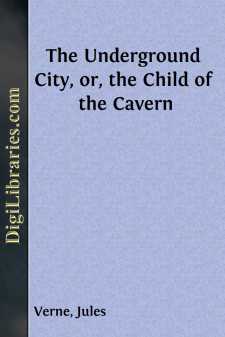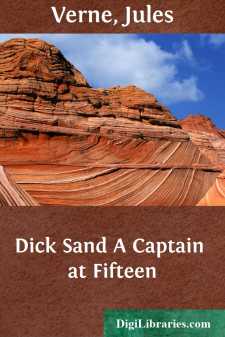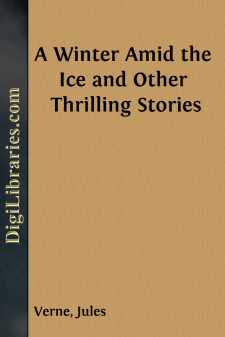Categories
- Antiques & Collectibles 13
- Architecture 36
- Art 48
- Bibles 22
- Biography & Autobiography 813
- Body, Mind & Spirit 142
- Business & Economics 28
- Children's Books 17
- Children's Fiction 14
- Computers 4
- Cooking 94
- Crafts & Hobbies 4
- Drama 346
- Education 46
- Family & Relationships 57
- Fiction 11829
- Games 19
- Gardening 17
- Health & Fitness 34
- History 1377
- House & Home 1
- Humor 147
- Juvenile Fiction 1873
- Juvenile Nonfiction 202
- Language Arts & Disciplines 88
- Law 16
- Literary Collections 686
- Literary Criticism 179
- Mathematics 13
- Medical 41
- Music 40
- Nature 179
- Non-Classifiable 1768
- Performing Arts 7
- Periodicals 1453
- Philosophy 64
- Photography 2
- Poetry 896
- Political Science 203
- Psychology 42
- Reference 154
- Religion 513
- Science 126
- Self-Help 84
- Social Science 81
- Sports & Recreation 34
- Study Aids 3
- Technology & Engineering 59
- Transportation 23
- Travel 463
- True Crime 29
The Underground City, or, the Child of the Cavern
by: Jules Verne
Categories:
Description:
Excerpt
CHAPTER I. CONTRADICTORY LETTERS
To Mr. F. R. Starr, Engineer, 30 Canongate, Edinburgh.
IF Mr. James Starr will come to-morrow to the Aberfoyle coal-mines, Dochart pit, Yarrow shaft, a communication of an interesting nature will be made to him.
"Mr. James Starr will be awaited for, the whole day, at the Callander station, by Harry Ford, son of the old overman Simon Ford."
"He is requested to keep this invitation secret."
Such was the letter which James Starr received by the first post, on the 3rd December, 18—, the letter bearing the Aberfoyle postmark, county of Stirling, Scotland.
The engineer's curiosity was excited to the highest pitch. It never occurred to him to doubt whether this letter might not be a hoax. For many years he had known Simon Ford, one of the former foremen of the Aberfoyle mines, of which he, James Starr, had for twenty years, been the manager, or, as he would be termed in English coal-mines, the viewer. James Starr was a strongly-constituted man, on whom his fifty-five years weighed no more heavily than if they had been forty. He belonged to an old Edinburgh family, and was one of its most distinguished members. His labors did credit to the body of engineers who are gradually devouring the carboniferous subsoil of the United Kingdom, as much at Cardiff and Newcastle, as in the southern counties of Scotland. However, it was more particularly in the depths of the mysterious mines of Aberfoyle, which border on the Alloa mines and occupy part of the county of Stirling, that the name of Starr had acquired the greatest renown. There, the greater part of his existence had been passed. Besides this, James Starr belonged to the Scottish Antiquarian Society, of which he had been made president. He was also included amongst the most active members of the Royal Institution; and the Edinburgh Review frequently published clever articles signed by him. He was in fact one of those practical men to whom is due the prosperity of England. He held a high rank in the old capital of Scotland, which not only from a physical but also from a moral point of view, well deserves the name of the Northern Athens.
We know that the English have given to their vast extent of coal-mines a very significant name. They very justly call them the "Black Indies," and these Indies have contributed perhaps even more than the Eastern Indies to swell the surprising wealth of the United Kingdom.
At this period, the limit of time assigned by professional men for the exhaustion of coal-mines was far distant and there was no dread of scarcity. There were still extensive mines to be worked in the two Americas. The manu-factories, appropriated to so many different uses, locomotives, steamers, gas works, &c., were not likely to fail for want of the mineral fuel; but the consumption had so increased during the last few years, that certain beds had been exhausted even to their smallest veins. Now deserted, these mines perforated the ground with their useless shafts and forsaken galleries. This was exactly the case with the pits of Aberfoyle....












